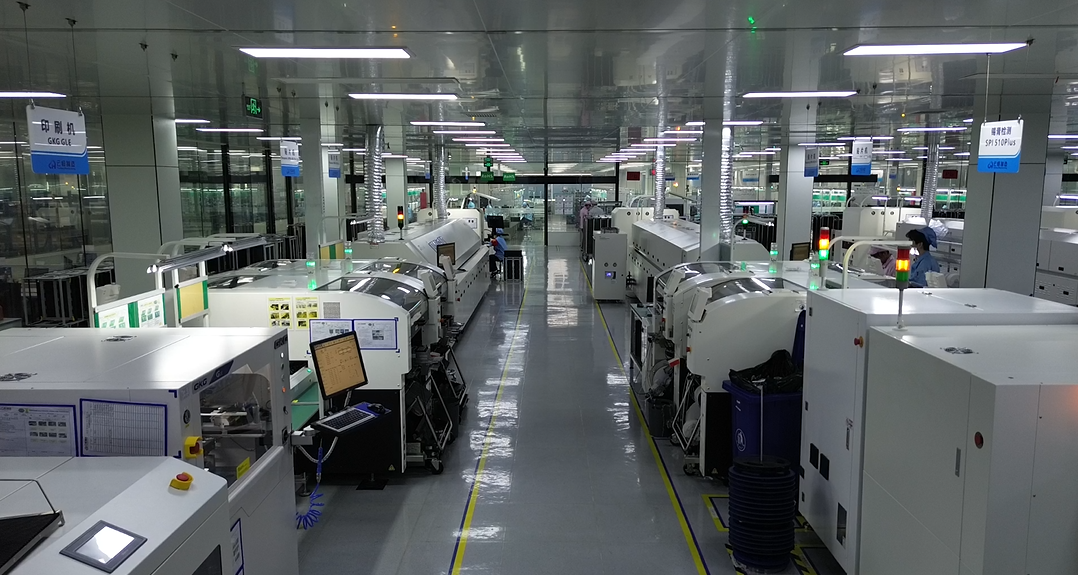SMTProcessBasics:KeyStepsandTermsExplained
What Is Surface Mount Technology?
Surface Mount Technology (SMT) refers to a method of assembling electronic components directly onto printed circuit boards (PCBs). Unlike older through-hole techniques, SMT components are smaller and mounted on the board's surface. This approach allows for higher component density, improved performance, and automated production. The process involves multiple stages, each with specific equipment and technical requirements.
Common SMT Process Terms
Key terms in SMT include "Solder Paste Printing," which describes applying solder paste to PCB pads using stencils. "Pick-and-Place" refers to machines that position components accurately on boards. "Reflow Soldering" denotes the oven-based process that melts solder paste to create permanent connections. "AOI" (Automated Optical Inspection) uses cameras to detect defects. Understanding these terms helps clarify workflow and quality control measures.
Stencil Preparation and Usage
Stencils, typically laser-cut from stainless steel, define where solder paste is applied. Alignment pins secure the stencil over the PCB during printing. Proper stencil thickness (usually 0.1-0.15mm) ensures correct solder volume. Regular cleaning prevents paste clogging in apertures. Some facilities use nano-coated stencils to reduce residue buildup, improving print consistency across production batches.
Solder Paste Application
Solder paste, a mixture of tiny metal particles and flux, is spread across the stencil using a squeegee blade. Pressure and angle settings affect paste deposition uniformity. The viscosity of the paste must remain stable under different temperatures. Operators monitor spread patterns to avoid issues like smearing or incomplete coverage. Environmental controls in the printing area minimize paste drying during this critical stage.
Component Placement Systems
Modern pick-and-place machines use vision systems to align components with PCB landmarks. Feeders supply parts on reels, tubes, or trays. Placement speed ranges from 10,000 to 80,000 components per hour depending on machine type. Nozzle selection varies by component size – small capacitors require different tips than large connectors. Regular calibration maintains placement accuracy within ±0.03mm tolerances.

Reflow Soldering Stages
The reflow oven contains multiple heating zones: preheat, soak, reflow, and cooling. Temperatures gradually rise to activate flux and evaporate solvents. The peak temperature (typically 230-250°C) melts solder particles without damaging components. Thermal profiling uses thermocouples to verify each board type's heating curve. Nitrogen gas may be introduced to reduce oxidation during soldering.
Quality Inspection Methods
Automated optical inspection systems compare board images against design files to identify missing components or soldering defects. X-ray inspection checks hidden connections under chips or within ball grid arrays. In-circuit testing verifies electrical functionality. Manual spot checks supplement automated methods, particularly for prototypes or low-volume batches. Data from inspections feed back to adjust earlier process parameters.
Rework and Repair Techniques
Defective boards undergo rework using specialized tools. Hot air guns melt solder for component replacement. Microscopes assist in handling small parts. Soldering stations with temperature controls prevent board delamination. Conformal coating removal tools prepare boards for component-level repairs. Documentation of rework activities helps track recurring issues and improve process reliability.
Equipment Maintenance Practices
Daily maintenance includes cleaning paste residue from stencils and verifying machine calibrations. Weekly tasks involve lubricating mechanical parts and replacing worn nozzles. Monthly checks assess conveyor belt alignment and heater efficiency. Predictive maintenance systems analyze equipment data to schedule part replacements before failures occur. Proper maintenance reduces downtime and maintains product consistency.
Material Handling Protocols
Components remain in moisture-proof bags until needed, with humidity indicators confirming dry storage conditions. Solder paste requires refrigeration and room-temperature thawing before use. PCBs are handled with anti-static gloves to prevent electrostatic discharge. FIFO (First In, First Out) systems ensure materials are used within their shelf life. Traceability labels track material batches through production.
Production Floor Layout
An efficient SMT line arranges equipment in sequential order: stencil printer, placement machines, reflow oven, then inspection stations. Buffer racks allow work-in-progress storage between processes. Separate areas for material preparation and defect analysis prevent cross-contamination. ESD-safe flooring and grounded workstations protect sensitive components. Clear signage indicates safety zones around high-temperature equipment.
Staff Training Requirements
Operators receive instruction on machine interfaces and error message interpretation. Technicians learn preventive maintenance procedures and fault diagnosis. Quality control personnel master inspection equipment and defect classification standards. Cross-training enables flexible staffing across different process stages. Regular skill assessments ensure teams maintain competency as equipment and components evolve.
Environmental Considerations
Solder paste contains materials requiring proper disposal. Flux fumes are filtered before air release. Lead-free soldering alloys reduce toxic substance usage. Energy-efficient ovens minimize electricity consumption. Recycling programs handle used stencils and component packaging. Wastewater from cleaning processes undergoes treatment to meet environmental regulations before discharge.
Documentation Standards
Process sheets detail machine settings for each product type. Work instructions include diagrams for proper material loading. Change logs track equipment adjustments and maintenance activities. Defect reports document failure modes and corrective actions. All records follow ISO 9001 standards for quality management, ensuring consistency across production shifts and manufacturing sites.
